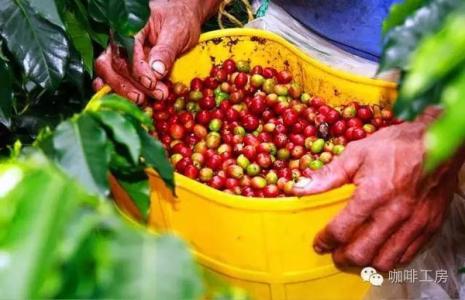Brief introduction of grinding scale for flavor description of Arabica coffee bean varieties
Arabica Coffee Bean Variety Flavor Description Taste Treatment Method Grinding Scale Introduction
Arabica differs from Robusta in that, although both are widely cultivated, Arabica Canephora differs significantly. Beans vary, plants vary, and in turn, the scope of their use varies. Arabica grows at high altitudes.
Arabica beans produce coffee of higher quality than other commercially grown coffee varieties (such as Robusta), with different flavors and lower caffeine content. The traditional processing method is to manually harvest coffee berries, peel them on the same day, and manually select coffee beans, roast them, and then grind them. With fresh milk, do not use the general market creamer, so coffee is particularly smooth and rich. Specific features are
Arabica coffee trees grow at an altitude of 900 meters to 2000 meters; cold-resistant, suitable growth temperature is 15-24℃; larger humidity, annual rainfall is not less than 1500 ml, and higher requirements are required for cultivation techniques and conditions.
ah
Rabica coffee beans are now mainly produced in South America (except Argentina and parts of Brazil), Central American countries, Africa (Kenya, Ethiopia and other places, mainly East Africa), Asia (including Yemen, India, Papua New Guinea and other parts of the region), China's Yunnan, Hainan, Taiwan also planted a small amount of Arabica coffee beans.
Although Arabica is grown commercially in many countries, wild Arabica grows only in small areas of Ethiopia's southern highlands and neighbouring South Sudan.

Important Notice :
前街咖啡 FrontStreet Coffee has moved to new addredd:
FrontStreet Coffee Address: 315,Donghua East Road,GuangZhou
Tel:020 38364473
- Prev

Diagram of the proportion of gouache in hand-brewed coffee
Hand-brewed coffee gouache ratio step diagram practical parameters of hand-brewed coffee proportion [heavy taste] 1 coffee bean grams than black coffee milliliters), that is, gold cup criteria of 1 12.5 grams 1bureau 13.5 (beans weigh more milliliters than raw water) [moderate taste] 1 12 cup 1pur13 (I. E. gold cup criteria 1V 14.5 grams 1lane 15.5) [refreshing] 1:14 ~ 1:16 (that is, 1RV 16.5 of the Golden Cup Criterion)
- Next

Coffee extraction rate and concentration Professional analysis Hand brewed coffee extraction time
Coffee extraction rate and concentration professional analysis of hand-brewed coffee extraction time One of the most critical factors in brewing a good cup of coffee is grinding. Proper grinding can fully extract the organic substances that produce flavor in coffee, and improper grinding may cause coffee to be over-extracted or under-extracted. Either way, coffee will not taste good enough and may even rush out unpleasant
Related
- Beginners will see the "Coffee pull flower" guide!
- What is the difference between ice blog purified milk and ordinary milk coffee?
- Why is the Philippines the largest producer of crops in Liberia?
- For coffee extraction, should the fine powder be retained?
- How does extracted espresso fill pressed powder? How much strength does it take to press the powder?
- How to make jasmine cold extract coffee? Is the jasmine + latte good?
- Will this little toy really make the coffee taste better? How does Lily Drip affect coffee extraction?
- Will the action of slapping the filter cup also affect coffee extraction?
- What's the difference between powder-to-water ratio and powder-to-liquid ratio?
- What is the Ethiopian local species? What does it have to do with Heirloom native species?

